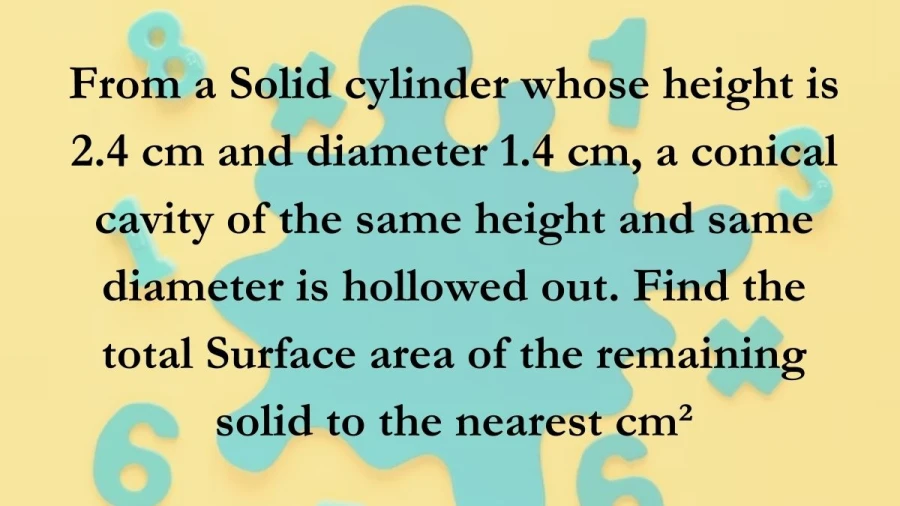Physical Address
304 North Cardinal St.
Dorchester Center, MA 02124
Physical Address
304 North Cardinal St.
Dorchester Center, MA 02124

Given:
Radius of the cylinder (r) = d/2 = 0.7 cm
Height of the cone (h) = Height of the cylinder (h) = 2.4 cm
Radius of the cone (r) = Radius of the cylinder (r) = 0.7 cm
Slant height of the cone (l) = √(r^2 + h^2) l = √(0.7^2 + 2.4^2) l = √(0.49 + 5.76) l = √6.25 = 2.5 cm
Now, we can calculate the total surface area (TSA) of the remaining solid using the formula:
TSA = πr(2h+l+r)
=22/7 × 0.7 cm ×(2 ×2.4 cm +2.5 cm +0.7 cm)
=2.2 cm × 8 cm =17.6 = 17.6cm²
Therefore, the correct total surface area of the remaining solid, rounded to the nearest cm^2, is 18 cm^2.
Lateral Surface Area:
The lateral surface area of a cone refers to the curved portion of the cone, excluding the circular base. It can be calculated using the formula:
Lateral Surface Area (LSA) = π * r * l
where:
Total Surface Area:
The total surface area of a cone includes both the lateral surface area and the area of the circular base. It can be calculated using the formula:
Total Surface Area (TSA) = LSA + Area of Base
Since the base is a circle, its area can be calculated using the formula:
Area of Base = π * r^2
Therefore, the complete formula for the total surface area of a cone is:
TSA = π * r * l + π * r^2
Key Points:
l^2 = h^2 + r^2.Example:
Suppose a cone has a radius of 5 cm and a slant height of 12 cm.